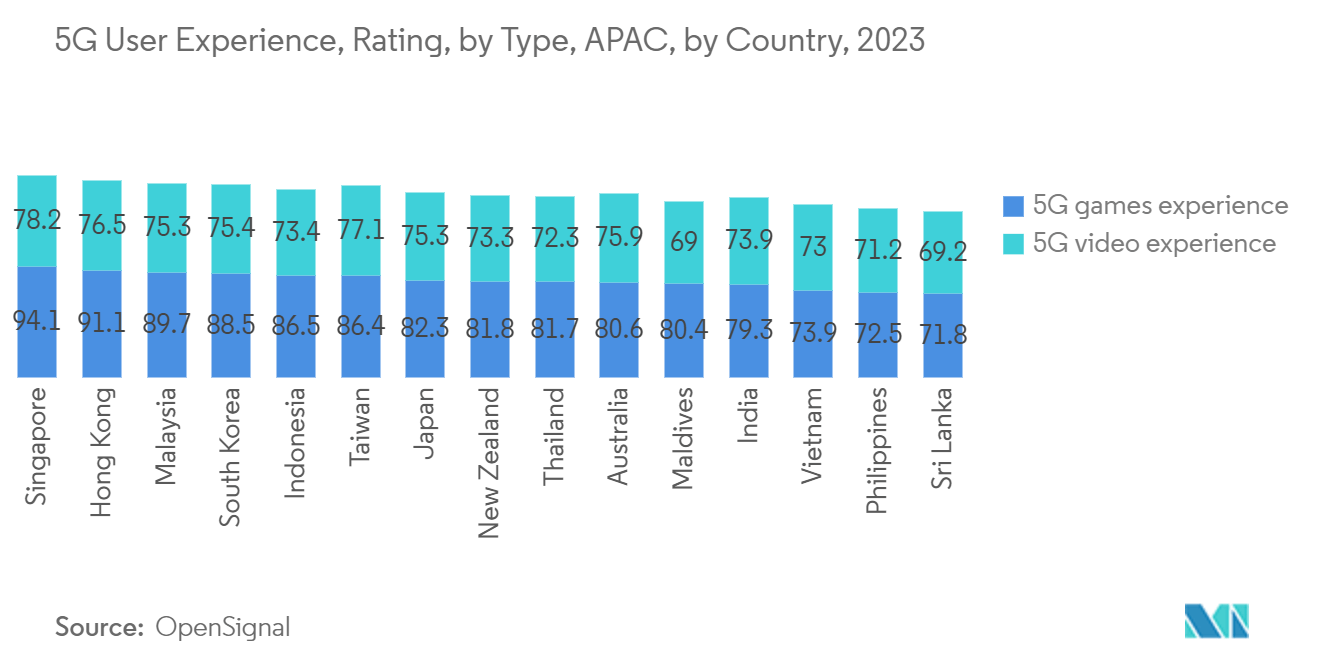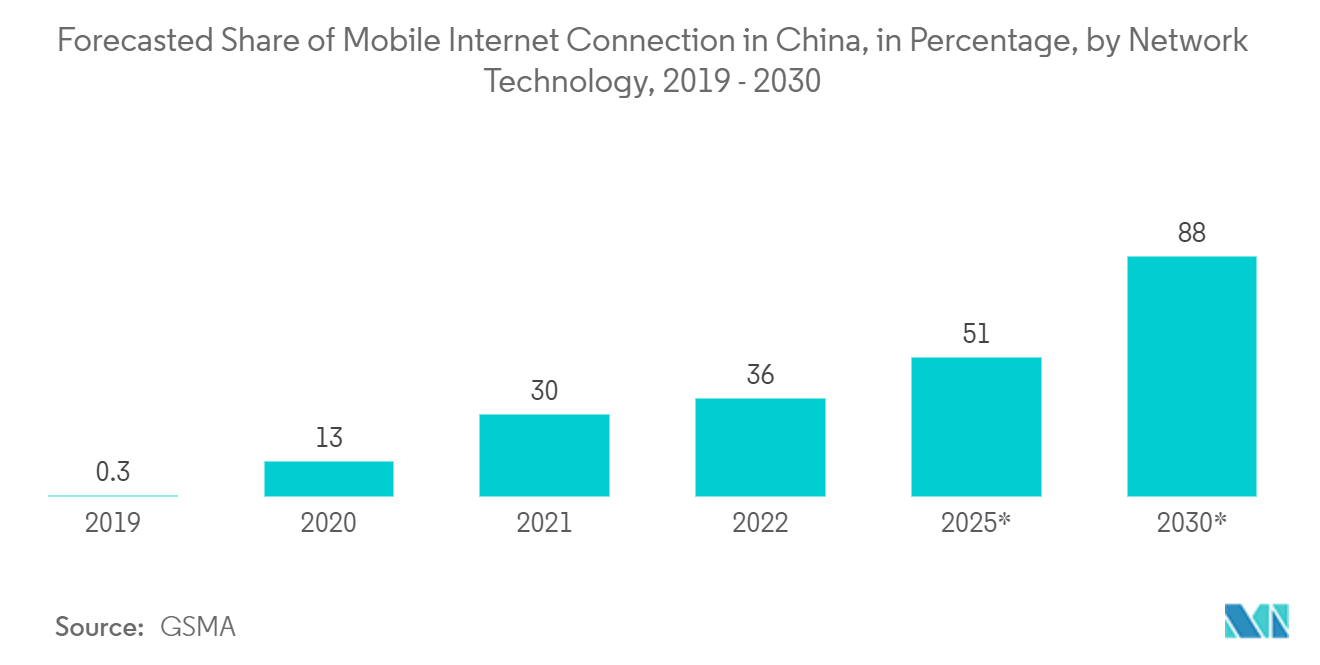Market Trends of Asia-Pacific Enterprise Routers Industry
IT and Telecommunication to Witness Major Growth
- Asia-Pacific's IT and Telecom industry has witnessed considerable investment in network infrastructure development. Governments, businesses, and service providers have focused on expanding their networks to meet the increasing demand for connectivity. This expansion led to the deployment of larger and more complex networks, requiring enterprise routers to manage and optimize the traffic flow.
- Adopting cloud computing and data centers are the main drivers in the enterprise router market. In Asia-Pacific, cloud service providers and enterprises increasingly leverage cloud infrastructure and host their applications and services in data centers. This trend has led to a surge in data traffic between cloud, data centers, and end-user devices, requiring robust and scalable networking solutions like enterprise routers to manage data flow effectively.
- According to OpenSignal, In 2023, Singapore led the Asia-Pacific region with the highest 5G video user experience rating, scoring 78.2 out of 100. Additionally, the nation achieved the top spot for 5G games user experience, boasting an impressive 94.1 out of 100.
- Edge computing leads to an increased demand for enterprise routers due to the need for reliable, secure, and high-performance networking infrastructure to support the expanding edge deployments and handle the increased data traffic at the network edge.
- The growing investment in telecom infrastructure supports the market growth, as 5G networks require advanced infrastructure to handle high-speed connectivity and increased data traffic. As a result, the market is growing because of the need for 5G-enabled advanced specification enterprise routers.

China is Expected to Hold Significant Market Share
- The infrastructure of China's information technology infrastructure has been expanding significantly, creating a demand for networking equipment such as enterprise routers. Both wired and wireless routers play a crucial role in establishing and maintaining network connectivity for businesses in China.
- Additionally, several public-private partnerships aiming at developing and offering router solutions to underserved and rural areas are anticipated to augment the growth of the regional industry. The "Internet Plus" strategy, which the Chinese government created, has also helped the market develop network equipment, especially broadband.
- The Chinese government is also making significant investments in connectivity and digital infrastructure projects. The need for wireless enterprise routers is projected to expand as more government agencies, departments, and organizations need reliable and secure access to the Internet.
- The State Council's goal for the growth of the digital economy during the 14th Five-Year Goal era in China clearly stated that the digital economy, after agriculture and industry, is the major economic pillar of the entire country. The goal of the country was to have a fully developed digital economy by 2025, with the main sectors of the digital economy's added value estimated to contribute 10% of GDP.
- As per GSMA, the percentage of 5G connections in 2022 was 36%, which is expected to reach around 88% in 2030. Additionally, there were 1.17 billion mobile internet users in 2022, which is expected to rise to 1.33 billion by 2030.
- Mobile networks are already highly densified, but 6 GHz may enable the growth of sustainable 5G capacity on existing sites to allow cost-effective deployments. Also, the timely availability of 6 GHz, at reasonable conditions and price, will drive cost-efficient network deployment, help reduce the broadband usage gap and support digital inclusion. This will augment the market's growth in the country.


